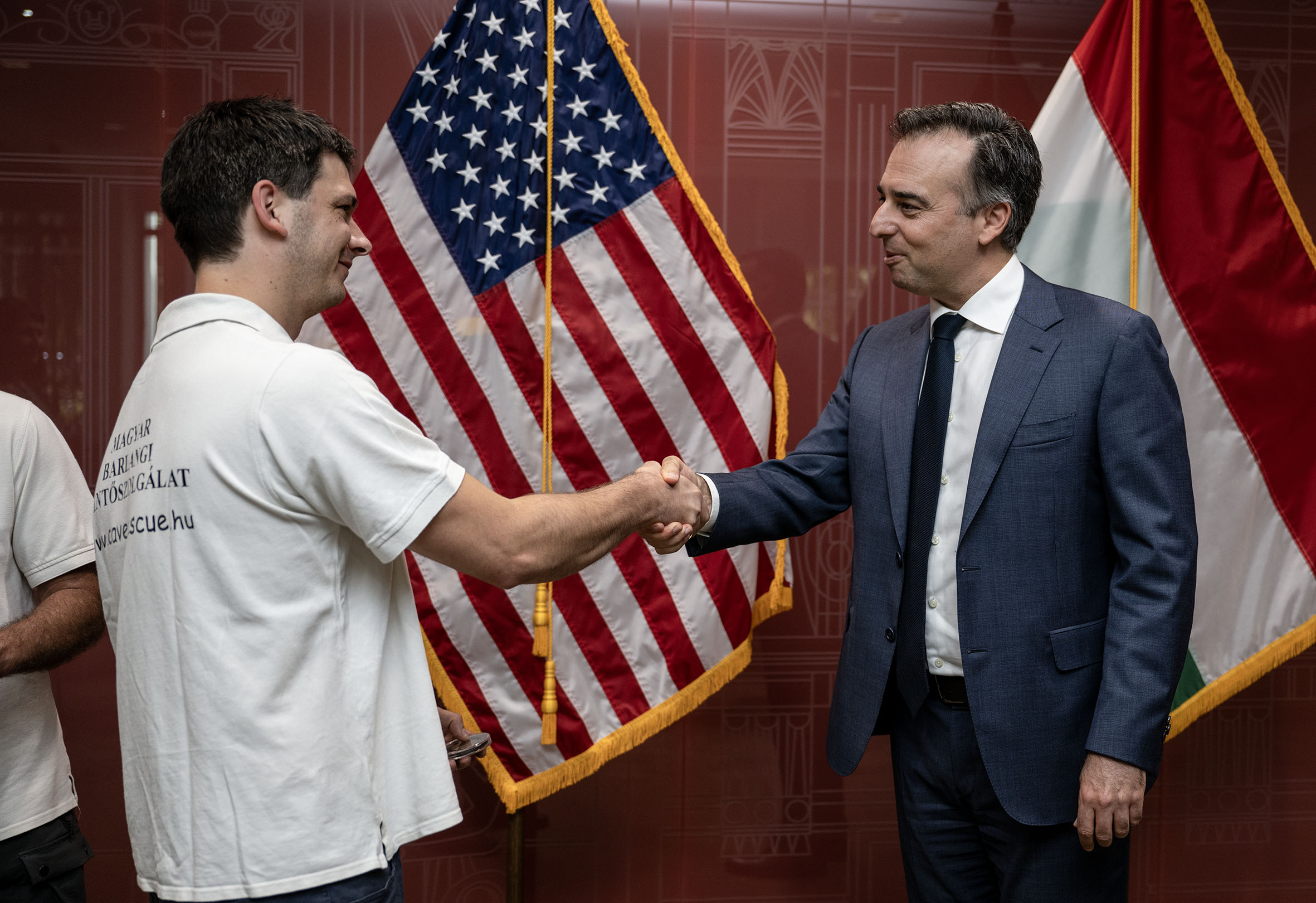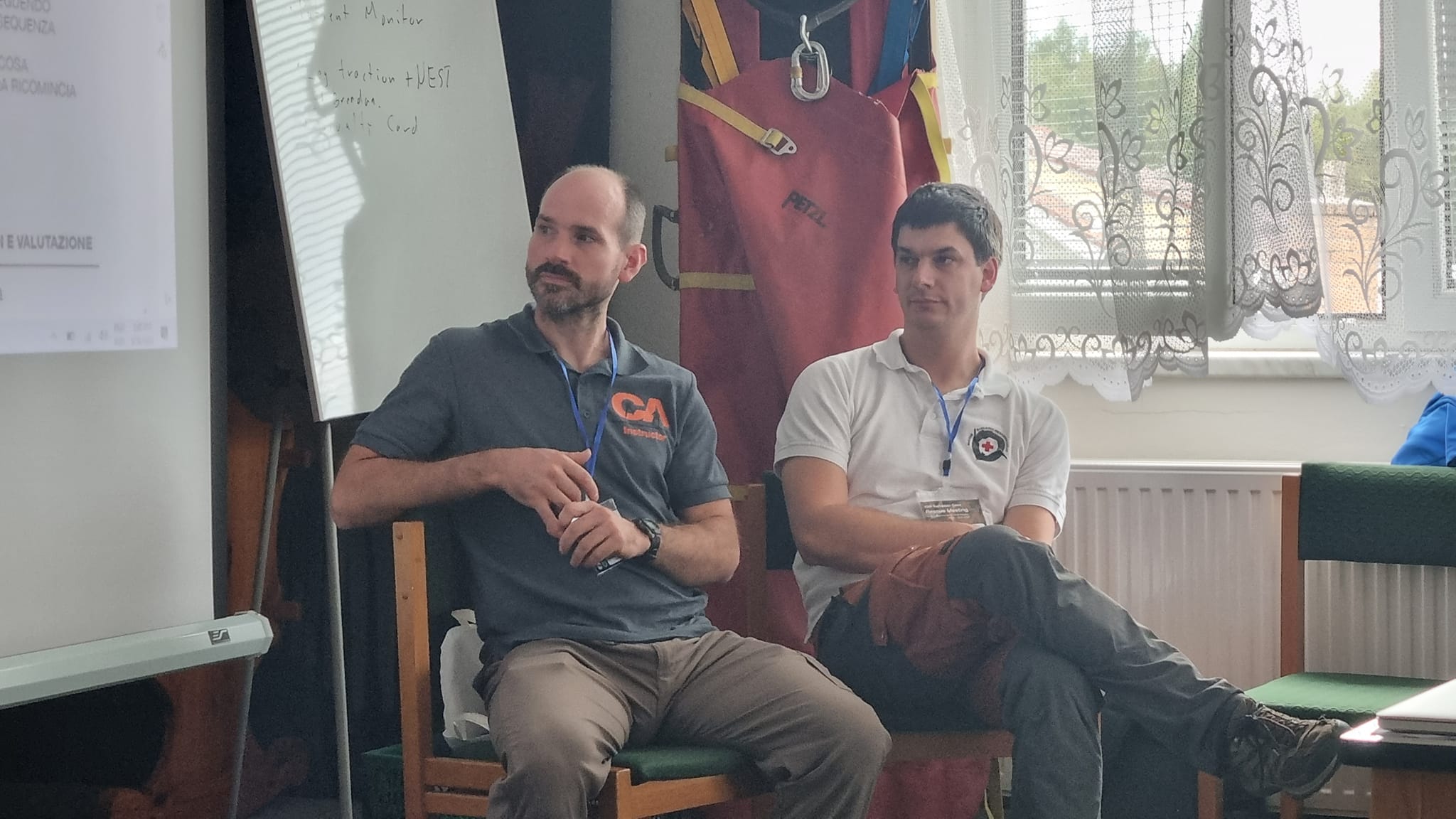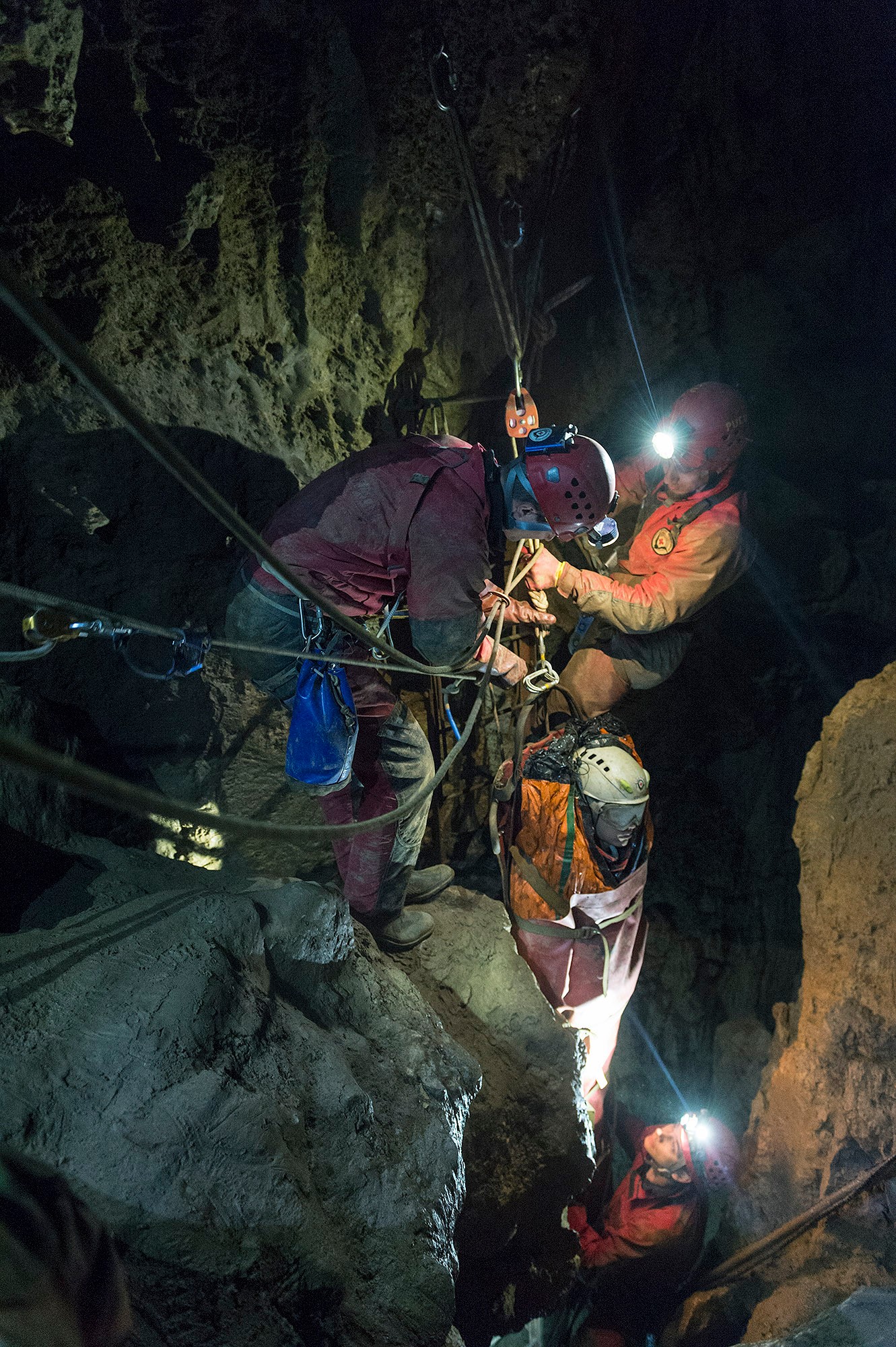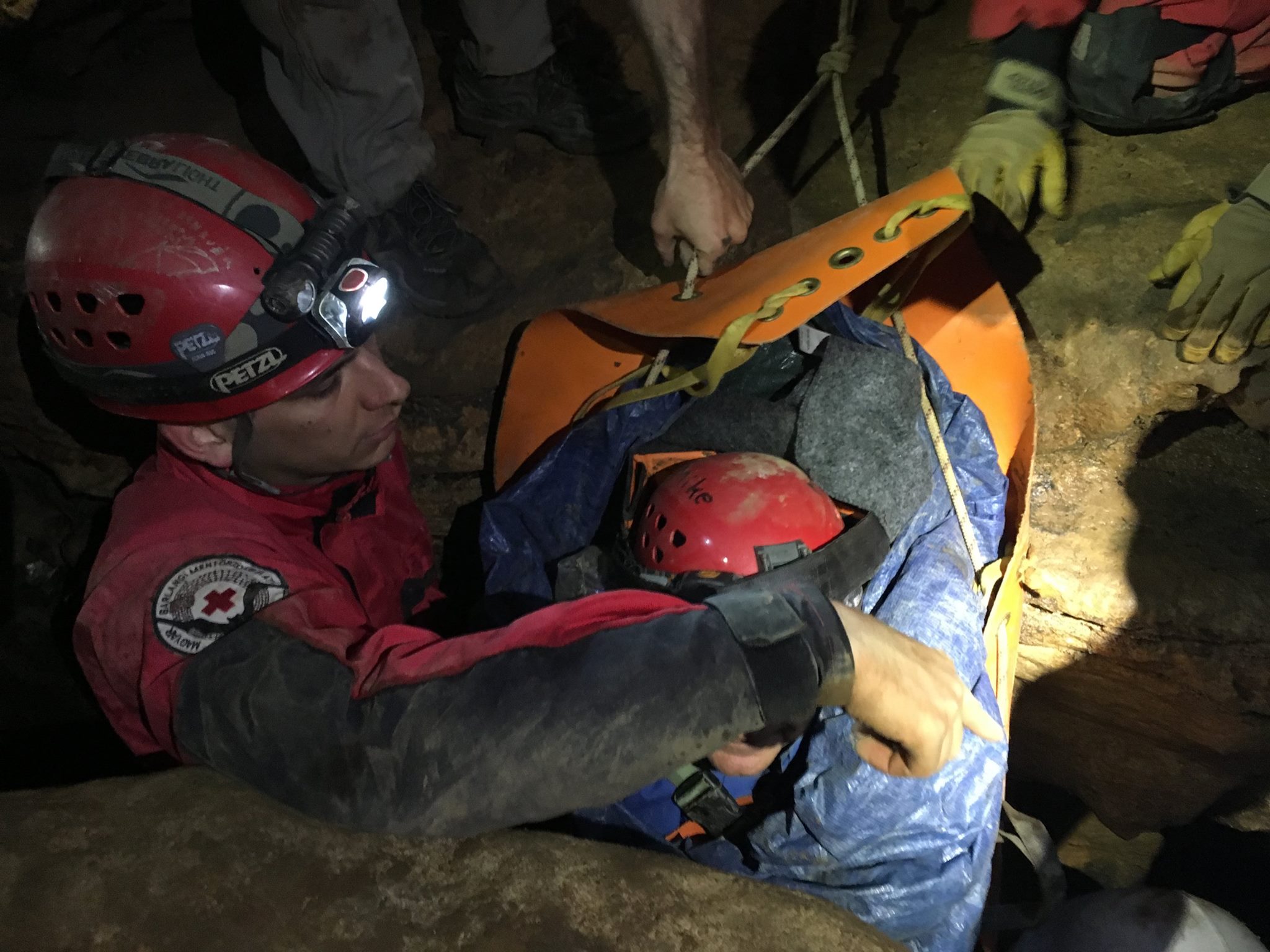Unprecedented International Cave Rescue Draws on International Skills
Written by Office of Alumni Affairs Intern Isabella Romine; edited by Asha Beh and Maria Eliades
In September 2023, Hungarian-American Enterprise Scholarship Fund (HAESF) ExchangeAlumni Dr. Dénes Ákos Nagy’s interests in medicine and caving combined - and it was not the first time. In this instance, he helped coordinate the medical response for the rescue of the American caver, Mark Dickey, from the Morca cave in Anamur, Türkiye, and he did it remotely. Nagy, who is the medical chief for the Hungarian rescue team and the chair of the European Cave Rescue Association’s medical commision, couldn’t go to Türkiye because his child was imminently due, but he worked tirelessly from his home in Hungary as part of the management team for almost 200 rescuers.
The rescue was near-unprecedented in its scale, according to Nagy, because caving is a safe activity and accidents requiring such international effort are rare. Rescues are typically handled by the rescue teams of the country in which the rescue is taking place, but the Morca cave rescue required a large response for several reasons.
As Dickey was over 1,000 meters (3400 feet) deep in the Morca cave system, the distance itself required an unprecedented amount of resources. The rescue was further complicated by the fact that the cave is still an active exploration site, and as such it was not rigged or equipped to the standards many cavers are accustomed to, especially for a rescue situation.
“Going to 1,000 meters deep, it’s challenging for most cavers,” Nagy said. “Even from the rescue teams probably about half of them have been to that [depth].”
Dickey’s condition also required immediate treatment and the doctor sent from the Hungarian Cave Rescue Service arrived on the afternoon of the fourth – two days after Nagy and his colleagues received a call from expedition member Jessica Van Ord providing the initial information about Dickey’s critical condition.
“That was the first challenge,” Nagy said, “[finding] somebody, a doctor, who is able to get there and stabilize Mark’s condition. The actual rescue operation was only possible afterwards.”
The rest of the rescue included coordinating the volume of people and equipment needed on site, as well as convincing the Turkish authorities to extend official invitations to other nations who could assist in the rescue. Prior to September 7, when the Turkish government extended invitations to the Italian and Croatian rescue teams, the rescue was coordinated entirely by volunteers, which Nagy says was difficult as the available personal and material resources were limited.
Further challenges in Dickey’s rescue included anticipating Dickey’s ongoing medical needs as there was no contact with the first doctor to reach Dickey for nearly the first three days of the rescue. Caves block nearly all wireless signals, therefore communication is conducted through phone lines and runners. When the rescue started the phone line was only established to about 500m depth, and to reach it a runner arriving from Dickey’s location needed to travel about 7 hours. This created an about 7-14 hour communication delay. Adding this to a travel time of about 17 hours (Base camp to Dickey’s location) means that resources would be 24h delayed if they are only sent in when requested from the patient’s side. One of Nagy’s roles during the rescue was to anticipate what medical resources (such as fluids and blood transfusion supplies) will be needed, and coordinate them, in advance to prevent such delays. This work included communicating these needs to the Turkish administration, the other rescue teams, and the runners bringing them from the surface to the patient.
Nagy’s main role, however, was coordinating international cooperation and trying to find the right people to fill the needed roles. Nagy credits his international exchange and his other experiences working in foreign countries for preparing him to work on such a global rescue team.
Nagy noted that more cavers are going on international expeditions, many of which are taking place in countries and in remote areas where rescue teams are not present or not equipped to handle complicated rescues. There are ongoing conversations on how to handle situations like Dickey’s, including at the annual European Cave Rescue Association meeting, which Nagy recently attended in Portugal.
Dickey was finally pulled above ground in mid-September after more than a week of around the clock efforts. Nagy noted that one solution to similar scenarios is greater cooperation between international cave rescue teams, such as through cave rescue training initiatives such as the International Instructor Exchange Program, which Nagy was inspired to establish after his exchange program, wherein he spent a year in Washington, D.C., developing his professional skills and exploring the regional cave systems.
“I think if you want to make something like a rescue on this scale happen, then you need to know a little bit about how other people…. on the other side of the phone are the same people as you,” Nagy said. “You can talk to them the same way you would talk to somebody from your own nation. I think that’s probably the biggest benefit [of my international exchange program]--that you are open to communicate with people from other nations.”
Dr. Nagy shakes Ambassador Pressman's hand.
Mark Dickey and Dr. Dénes Ákos Nagy on the European Cave Rescue Association's yearly meeting, one year prior to the rescue. (Photo courtesy: Dr. Nagy)
Dr. Dénes Ákos Nagy at a practice rescue with the Hungarian rescue team. (Photo courtesy: Dr. Nagy)
Dr. Dénes Ákos Nagy at a practice rescue with the USA National Cave Rescue Commission (NCRC). (Photo courtesy: Dr. Nagy)





